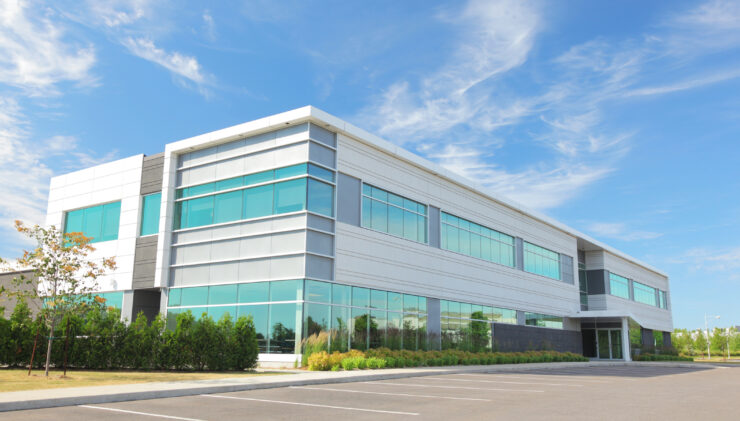 What to Do if a Customer Is Injured on Your Premises
What to Do if a Customer Is Injured on Your PremisesDoes it seem like it’s getting increasingly difficult to secure insurance coverage for your business? Rates are rising, coverage restrictions are becoming more common and in some cases, insurers are denying coverage entirely. These are symptoms of a hard market, and they may impact your commercial insurance strategy.
The State of the Insurance Market
In the second quarter of 2022, U.S. property and casualty rates increased by 5.91%, according to MarketScout, a rate increase that’s very close to the rate hike seen in the first quarter. Cyber rates saw the largest increase, with a hike of 21.3%.
In June 2022, Property Casualty 360 published an article stating that we’ve been in a hard market. They cited 18 quarters of consecutive rate increases. Several causes are listed, including social inflation, unpredictable weather events, and the COVID-19 pandemic.
The Insurance Information Institute (III) says that the property and casualty insurance sector’s combined ratio for 2022 is projected to be 100.7, compared to a combined ratio of 99.5 in 2021. This is significant because a combined ratio of more than 100 indicates an underwriting loss. In other words, the insurer’s losses and expenses are greater than the premiums earned, and the insurer relies on investment income to earn a profit.
The 2023 Insurance Outlook from Deloitte warns that 2023 could bring continued challenges, including inflation, climate change, a possible recession, and geopolitical upheaval, among other factors.
Insurance market conditions impact the insurance coverage, policy terms, and rates that insurers are willing to provide.
Rates Will Likely Continue to Rise
Rates may continue to increase in the foreseeable future, and some lines will likely see larger increases than others. For example, Property Casualty 360 says that auto insurance rates could increase by 12% in 2023.
Businesses with renewals coming up should be prepared. Even with a good loss history and solid risk management strategies in place, premiums costs may increase. As rates continue to rise, business leaders will need to budget for escalating costs.
Coverage May Be More Limited
Rising rates may be the most noticeable symptom of a hardening market, but limited coverage is another issue.
As insurers grapple with increasing losses, they may not be willing to write policies with high limits. They may also add new exclusions. For example, Bloomberg Law says that insurers have been adding biometric exclusions in response to an increase in privacy lawsuits.
When policyholders get ready to renew their coverage or purchase new coverage, they should carefully look at the policy’s limits and exclusions. Additional coverage may be needed to avoid coverage gaps.
Insurance Applications and Renewals Require Attention
In a hardening market, carriers often increase their underwriting scrutiny as they attempt to control losses.
This has already been seen in certain lines, especially cyber. According to CIAB, cyber insurance underwriters have been making multifactor authentication and other cybersecurity measures mandatory. If you can’t show that you’re meeting the carrier’s cybersecurity requirements in the application process, you probably won’t be able to secure coverage.
Although cyber lines have seen some of the most significant rate hikes and underwriting changes, other lines may also be subject to stricter underwriting standards. Whether you’re shopping for new coverage or your policy is up for renewal, be ready to show the carrier that your account is a good risk.
The Captive and Surplus Markets May Provide Alternatives
Certain risks may not be able to find coverage in the traditional insurance market. However, this does not mean that businesses have to go without coverage.
The excess and surplus (E&S) market provide an alternative, and it’s been growing in recent years. The E&S market consists of carriers that have not been licensed by the state. These carriers are able to underwrite risks that standard carriers won’t touch. According to AM Best, in 2021, U.S. surplus lines experienced the largest year-over-year premium growth since 2003 and reached a record $82.6 billion. This growth appears to be continuing in 2022, and the surplus lines market now represents more than 10% of the total property and casualty direct written premiums.
Captive insurance is another alternative. Captive insurance is a form of self-insurance, and according to The Triple-I Blog, the pandemic has fueled interest in this option.
Can Your Commercial Insurance Strategy Adapt?
Don’t be caught off guard by a rate hike or notice of non-renewal. Heffernan Insurance Brokers can help your business develop a commercial insurance strategy that helps you successfully navigate the hardening market. Our brokers have access to a vast number of carriers and niche programs. We also offer alternative risk management options such as self-insurance, captive programs, and E&S coverage. Learn more.



